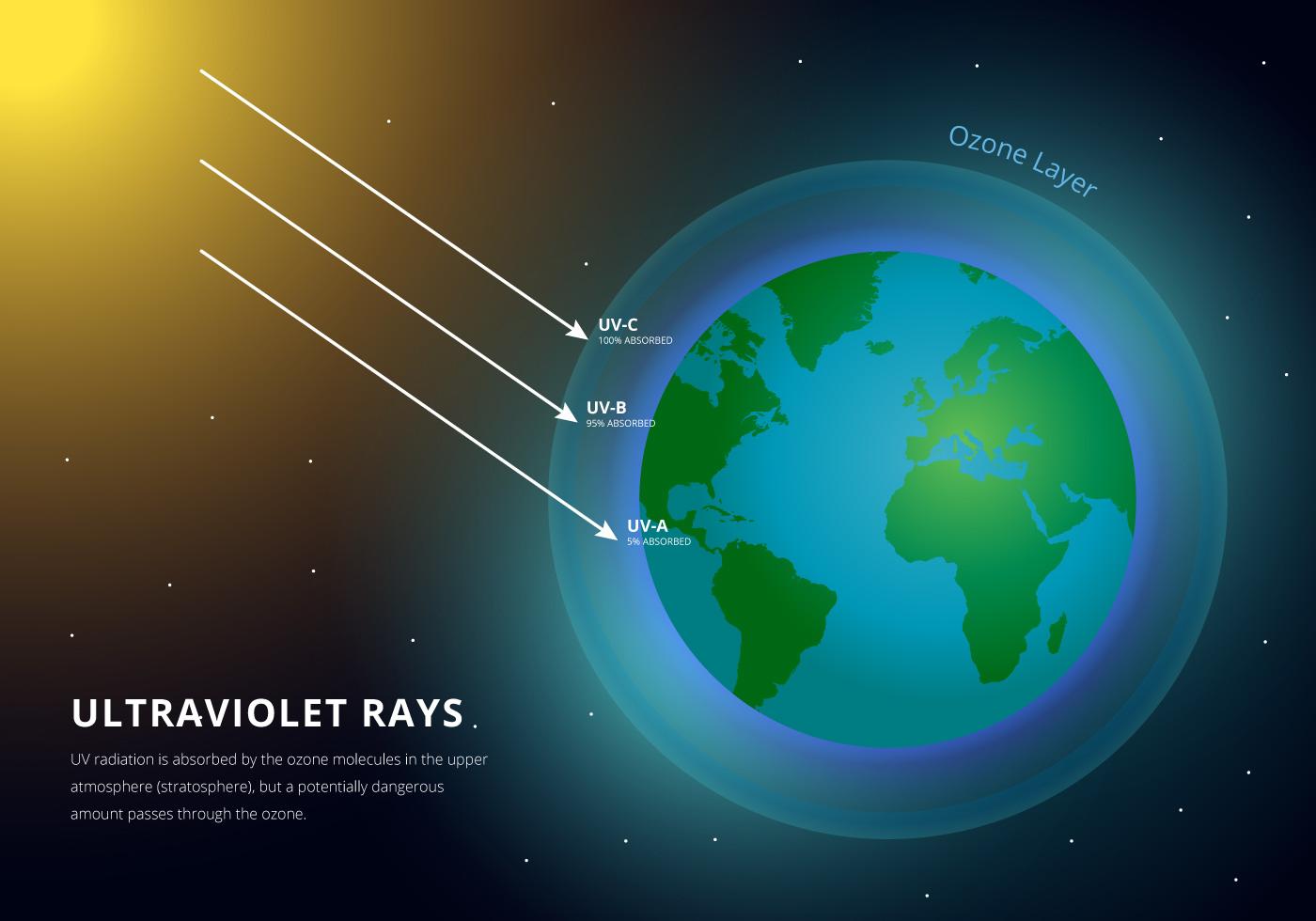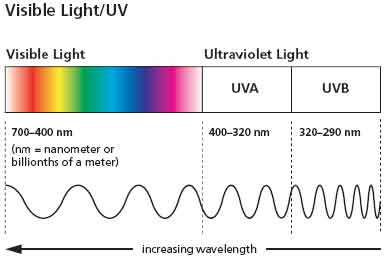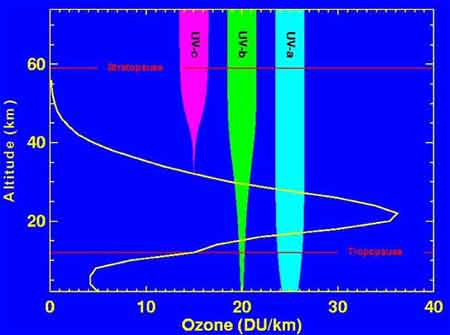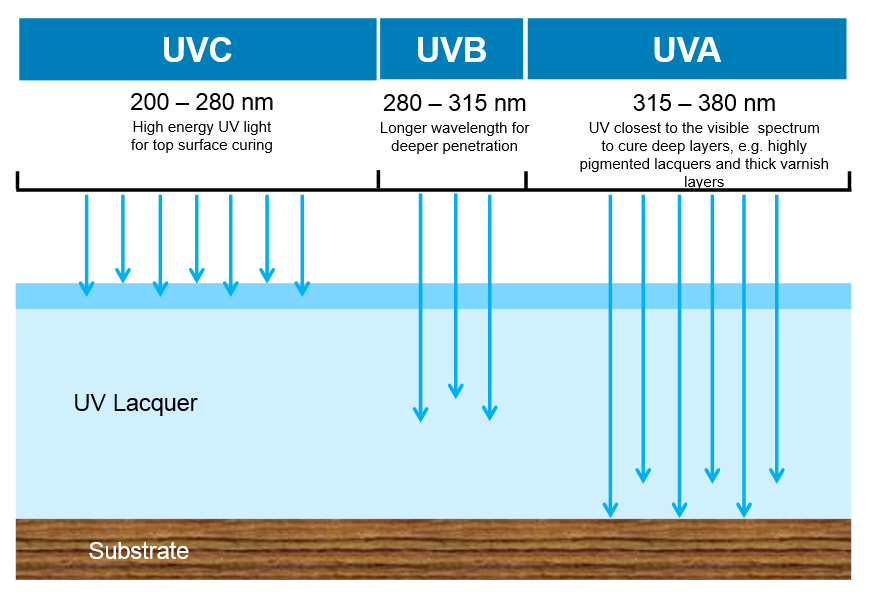

Usually within half a day of overindulging in the sun, the characteristic red-lobster look of a sunburn begins to make itself known, and felt.

The body senses this destruction and floods the area with blood to help with the healing process. UV rays can damage the DNA in the body's cells.

When this happens, a toxic reaction occurs, resulting in sunburn. However, continued exposure to UV radiation can overwhelm the body's defenses. "Melanin is a natural sunscreen," Gary Chuang, an assistant professor of dermatology at Tufts University School of Medicine, told Live Science in a 2013 interview. When the body senses sun damage, it sends melanin into surrounding cells and tries to protect them from sustaining more damage. Melanin absorbs UV light and dissipates it as heat.
#Uva uvb uvc wavelength skin
This consists of a pigment called melanin, which is produced by cells in the skin called melanocytes. Essentially, a suntan results from the body's natural defense mechanism kicking in. Still, "broad-spectrum ultraviolet radiation is the strongest and most damaging to living things," according to the NTP's "13th Report on Carcinogens." SunburnĪ suntan is a reaction to exposure to harmful UVB rays. No measurable UVC from solar radiation reaches the Earth's surface, because ozone, molecular oxygen and water vapor in the upper atmosphere completely absorb the shortest UV wavelengths. Of the solar UV energy that reaches the equator, 95 percent is UVA and 5 percent is UVB. However, only about 10 percent of sunlight is UV, and only about one-third of this penetrates the atmosphere to reach the ground, according to the National Toxicology Program (NTP). The challenge resulting from positive and negative effects of sunlight: how much solar UV exposure is appropriate to balance between risks of vitamin D deficiency and skin cancer? Prog Biophys Mol Biol 2006 92(1):9-16.Most of the natural UV light people encounter comes from the sun. “The origin and evolution of the solar system”. Remember that when you are enjoying the light produced by our friend, the Sun, do it safely never burn, and check with your physician for advice on sun exposure. The only truly natural way to obtain vitamin D is through exposure to sunlight or other UVB sources. Vitamin D is also available through supplementation, which is also produced by the irradiation of lanolin by UVB. Ninety percent of all vitamin D in human beings is produced by sunlight exposure, and in my book, Vitamin D3 and Solar Power, I discuss approximately 105 diseases that correlate to a deficiency of vitamin D.Īlthough some vitamin D can be obtained through fish, eggs, mushrooms and other dietary sources, the amount is miniscule. Of the three types of UV, we are most interested in UVB, which stimulates the production of vitamin D when it contacts the skin. It is an invisible part of the solar spectrum. UVC light has a wavelength of 280-10 nanometers and is filtered out by the Earth’s outer atmosphere.UVB stimulates the skin, which then produces vitamin D. UVB light has a wavelength of 315-290 nanometers and penetrates only the epidermis when it contacts the skin.UVA does not stimulate vitamin D production. UVA has a wavelength of 380-315 nanometers and when contacting the skin can penetrate beyond the outer layer (epidermis) into a layer called the dermis.UV wavelengths are measured in nanometers (one billionth of a meter). There are three main varieties of UV: UVA, UVB and UVC. UV is available year round in the tropics and during part of the year farther north and south. UV is a light that is invisible because its wavelength is shorter than the violet part of the sunlight spectrum. Part of that sunlight is known as ultraviolet light (UV). In fact, all life on Earth is ultimately dependent on the power of the sun, carried by sunlight, part of which is visible and part of which is invisible. A tiny portion of it reaches the Earth as sunlight where it warms our planet and gives us energy. It generates energy by nuclear fusion of hydrogen into helium, fusing 620 million metric tons of hydrogen each second, and that energy travels in every direction.

The sun is a fiery orb-a star that has a mass 330,000 times that of the earth.


 0 kommentar(er)
0 kommentar(er)
